5 strength training methods and what they are good for
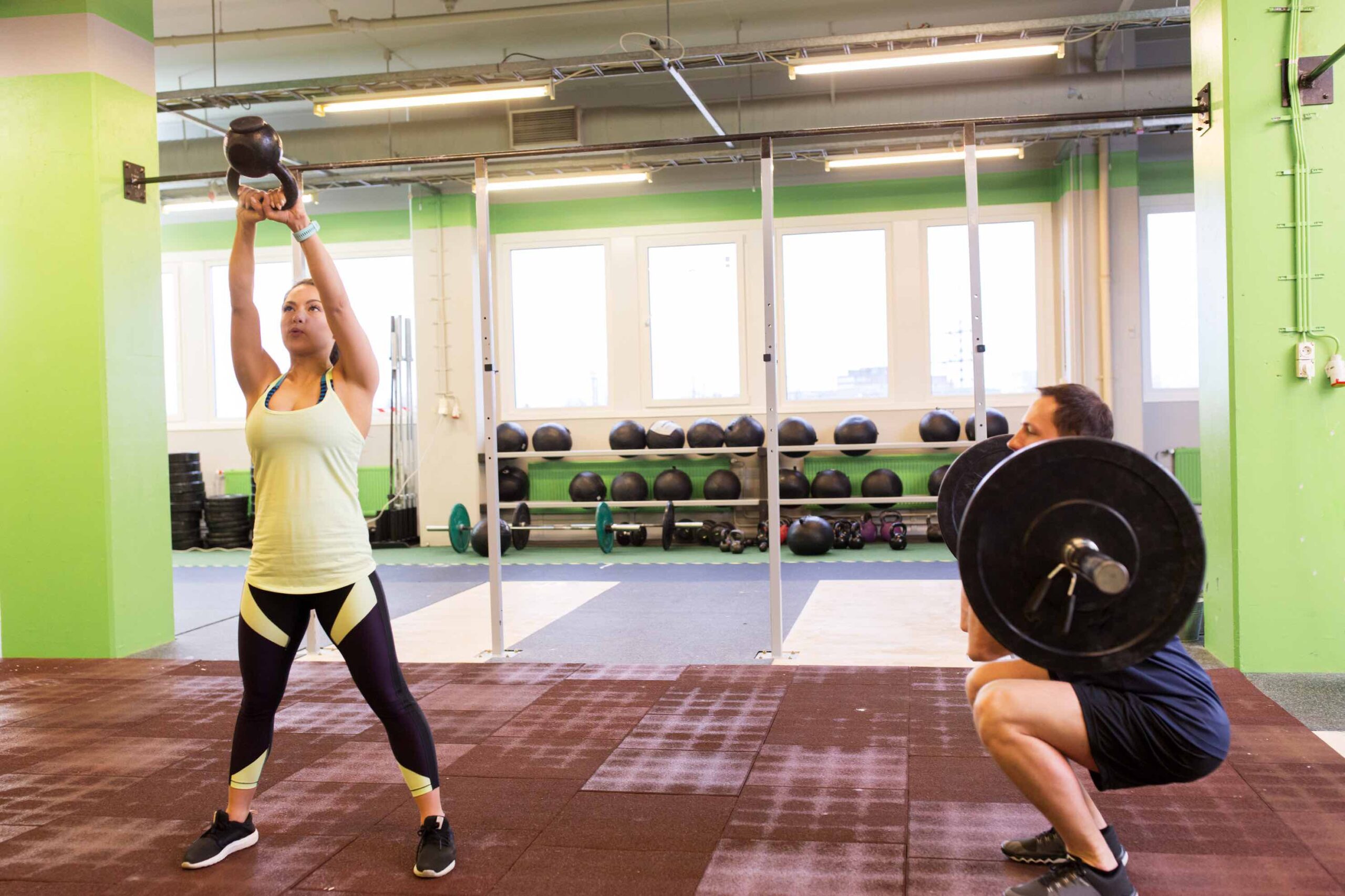
Strength training is becoming more and more popular with men and women alike. For each individual, the question arises: What do I want to achieve with this? Because different strength training methods should be used depending on the objective. Therefore here is an overview:
Much more than building muscles
Those who regularly do one or more of the various strength training methods do a lot of good for themselves and their bodies in many ways. The extra muscle not only looks good. Strength training strengthens ligaments, tendons, cartilage, and bones. It ensures good posture and prevents back pain. Fat also has significantly less chance of spreading. In addition, there is a proven anti-aging effect and significantly better protection against many diseases.
Your goal determines the strength training method
There are numerous strength training methods that you can do. Which one you choose depends entirely on your goals. The training for building clearly visible muscles looks different from the training for more speed or explosive strength. From a physiological point of view, strength is the ability to activate the so-called motor neurons in the muscle and the muscle fibers attached to them. Weight and speed determine efficiency. Regular training then leads to improvements in two areas:
- Intermuscular coordination. This is the interaction of the muscles involved in a movement.
- Intramuscular coordination.

How to set the right goals
With strength training, you can achieve very different goals. Some of you do it to become stronger and fitter. Some do it for their self-confidence, others for their health or to reduce their vulnerability to injury. And then, of course, there are those who want to improve their performance in a particular sport. Anyone starting a training program should be clear about their goals and, above all, set realistic goals. After all, success depends not only on the correct execution of the strength training but also on these factors:
- The chronological age. With increasing years of life, the adaptation symptoms usually take a little longer.
- Training age: If you have been training for many years or have trained regularly before, you have an advantage.
- Gender: Women and men react differently to strength training.
- Predisposition: Our genes determine how fast muscles build-up or how fast muscle fibers can contract.
- Lifestyle: The frequency and intensity of your training as well as your dietary habits and how you can integrate training into your everyday life.
Here are the 5 strength training methods
Here are five widely used strength training methods. I explain how they work, what effects they have, and who benefits from them. Of course, nobody has to choose just one method. The more variable a training, the better.
No. 1: Speed, agility, quickness
Agility and speed are skills that benefit ballplayers in particular. They have to be able to start and slow down explosively as well as abruptly change direction. Agility is also required in everyday life, for example, to prevent a fall when stumbling or to improve overall balance. Training is, therefore, necessary for strength, speed, acceleration, coordination, balance, and flexibility. These are the training contents:
- Functional Fitness and Crossfit especially multi-joint exercises with dumbbells, medicine balls, sand bags, resistance bands, and cable machines.
- The speed at which the movement is performed should vary, from slow to very fast. However, the activity must always be carried out correctly.
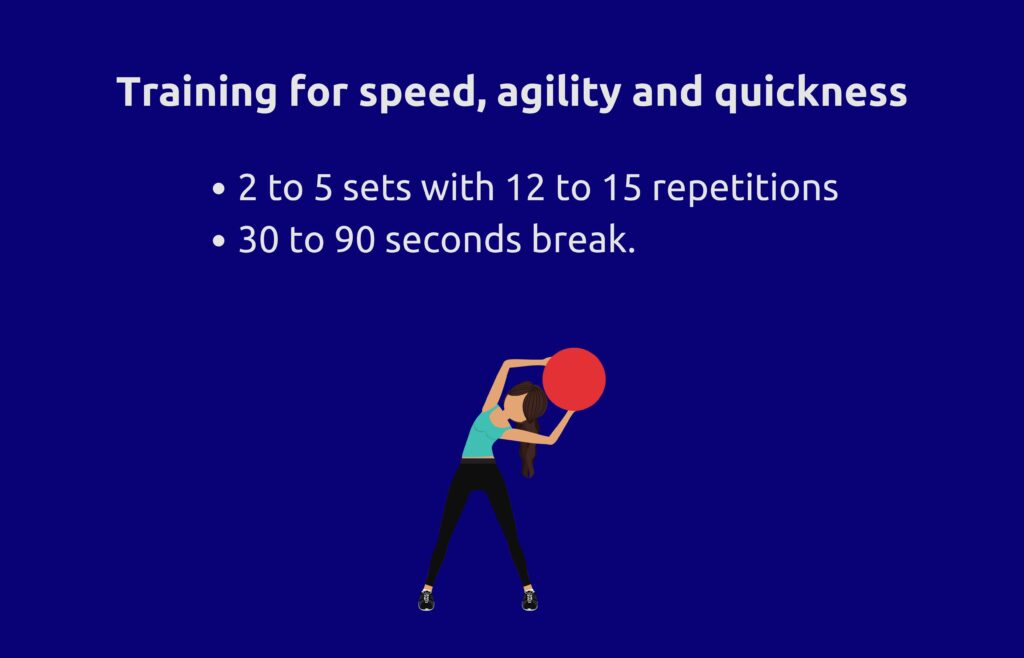
No.2: Improvement of strength endurance
This type of training is intended to improve the endurance of the muscle. This is made possible by the new formation of capillaries and mitochondria – the cell’s power stations. The better the strength endurance, the better the supply of oxygen and nutrients to the muscles. The regeneration time is also shortened. Not only runners, cyclists, triathletes, and rowers benefit from good strength endurance, but also every athlete and everyone who does fitness for health reasons. Because it also ensures that we can maintain a good posture for a long time. It is also ideal for beginners to build a good base.
- You can make single and multiple joint movements. All conceivable training devices can be used. It is also possible to train with your own body weight.
- The intensity is low to moderate at 40 to 60 percent of the repetition maximum.
- Best is 5 sets with 20 to 40 repetitions and 30 to 60 seconds break.
- The movement speed is rather slow and controlled.
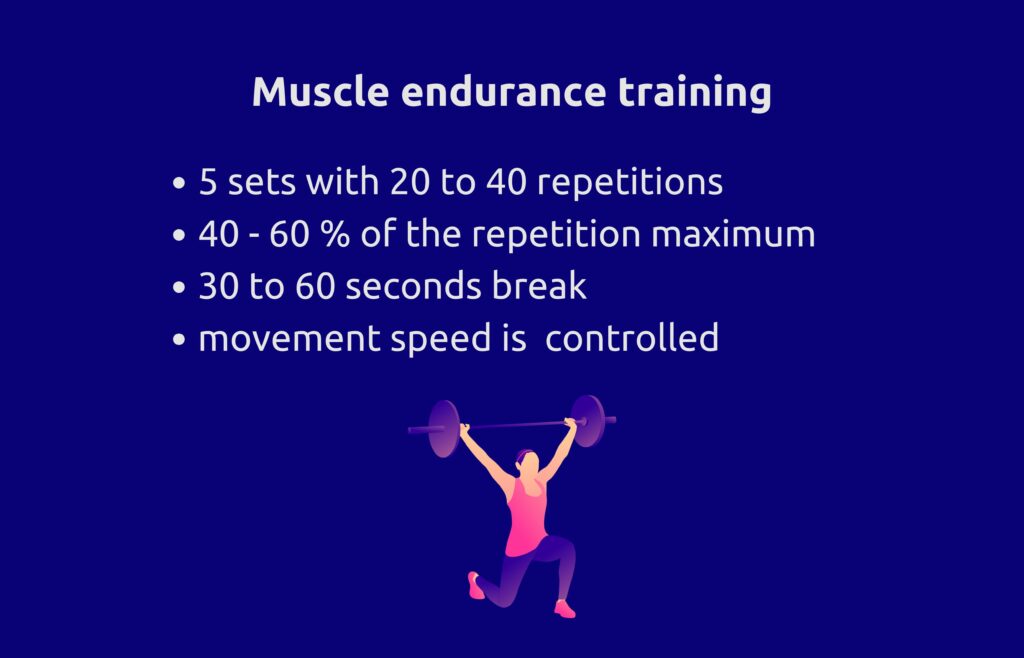
No. 3: How to improve your explosive power
The aim here is to develop maximum power in the shortest possible time. Inside the muscle, there is a muscle lengthening followed by a shortening phase for acceleration. The performance depends on the one hand on the composition of the muscle fiber and on the other hand on the so-called control of the muscle. The explosive power is very important for many athletes: for sprinters, shot-putters, long jumpers, volleyball players, weightlifters, to name but a few. A training of explosive strength improves the elasticity of muscle and connective tissue and activates the fast muscle fibers which are important for this.
- Single- and multi-jointed movements are used. Besides jumps, training with free weights is best. Also, certain exercises from the Crossfit, such as pushing the sled with not too much resistance. More tips: Medicine ball throwing and standing long jump.
- The intensity is 40 at a maximum of 75 percent of the repetition maximum.
- You do 2 to 5 sets with 1 to a maximum of 6 repetitions and 30 to 90 seconds break.
- The speed of the movements is naturally as fast as possible.
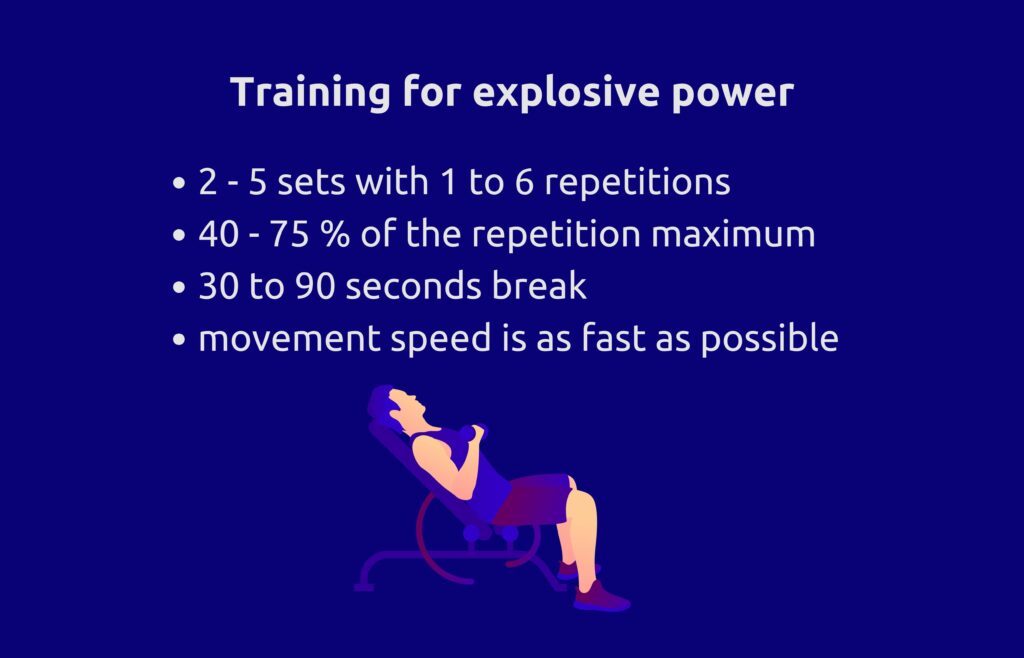
No. 4: The improvement of maximal strength
This method is about generating the maximum possible force against an insurmountable resistance. Your muscles have to recruit as many motor units as possible. This requires high neuromuscular efficiency and very good intra- and intermuscular coordination. Maximum strength training makes you stronger and grows muscles. The health aspect should not be underestimated either. Maximal strength training increases bone density and levels of muscle-building hormones. Except for endurance athletes and golfers, most athletes benefit from increased maximum strength.
- The intensity is 90 to 100 percent of the repetition maximum (RM).
- You do 3 to 4 sets with 1 to 4 repetitions and 2 to 5 minutes break.
- You try to work at high speed, but this is of course not possible due to the heavyweight.
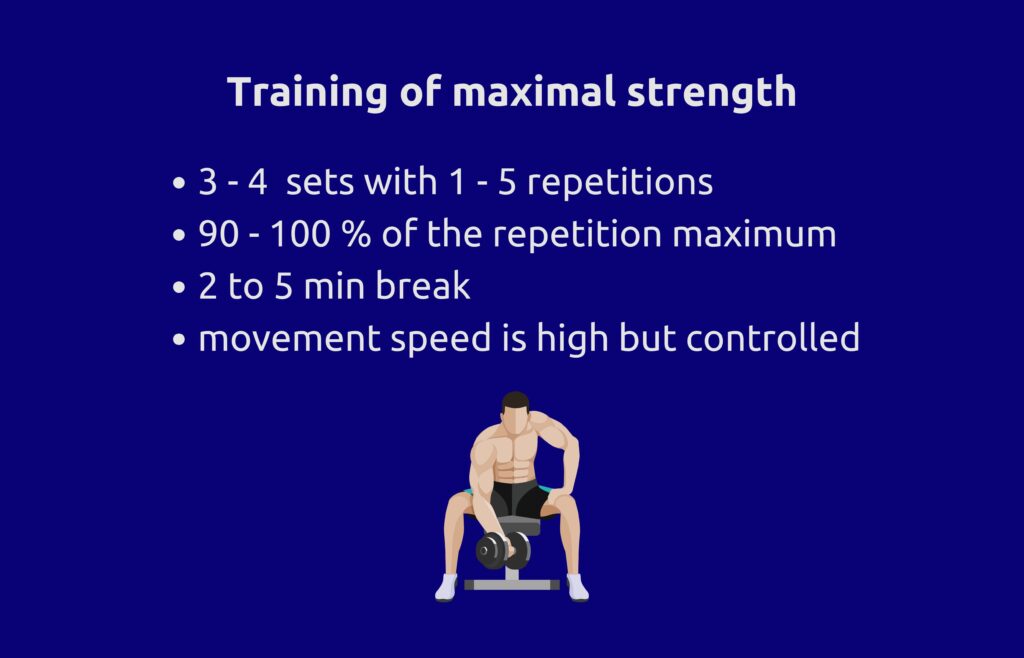
No. 5: Training of high-speed and fast power
The aim of high-speed is to generate as much power as possible in the shortest possible time. It is closely related to the explosive force and is also dependent on the repetition maximum. Good inter- and intramuscular coordination and neuromuscular efficiency are important. Athletes in sprint, jump, and throwing disciplines need it as well as almost all ball sportsmen, martial artists, and also golfers to swing.
- Single and multi-jointed movements, jumps, exercises with your own body weight and free weights are used.
- The intensity is 30 to 50 percent of the repetition maximum (RM).
- You do 2 to 6 sets with 1 to 6 repetitions with 30 to 120 seconds break.
- You work at high to explosive speed.
5 thoughts on “5 strength training methods and what they are good for”